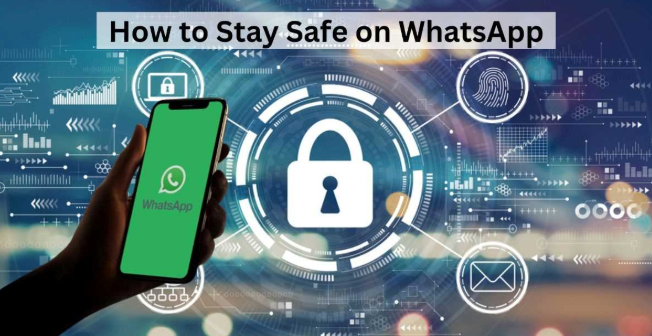How to Secure Your WhatsApp Chats: A Complete Privacy Guide
Messaging apps have become an essential part of our daily lives, with people sharing personal thoughts, financial details, and other sensitive information through these platforms. While WhatsApp offers end-to-end encryption by default—ensuring only you and the person you’re chatting with can see your messages—there are additional steps you can take to enhance your privacy and security.
1. Enable Two-Step Verification
One of the most effective ways to protect your WhatsApp account is by enabling two-step verification. This feature adds an extra layer of security by requiring a 6-digit PIN whenever you attempt to verify or reset your account.
How to enable two-step verification:
- Open WhatsApp and go to Settings
- Select Account > Two-Step Verification
- Tap Enable and set up your 6-digit PIN
- Enter an email address for account recovery in case you forget your PIN
By doing this, you reduce the risk of phishing attacks and prevent scammers from taking over your account.
2. Use Only the Official WhatsApp App
Ensure you are using the official version of WhatsApp to keep your chats private. Fake versions of WhatsApp can expose you to security risks, including data breaches, spam, and scams.
To verify you are using the right app:
- Check the app name—it should only be “WhatsApp”
- Ensure the logo is correct and not altered
- Download only from trusted sources such as the Google Play Store, Apple App Store, or WhatsApp’s official website
3. Use Disappearing Messages and View Once Mode
WhatsApp allows you to send messages, photos, and voice notes that disappear after being viewed.
Privacy features you can enable:
- View Once for photos and videos—the recipient can only view them once.
- View Once for voice notes—voice messages will be deleted after being played.
- Disappearing Messages—chats will be deleted after 24 hours, 7 days, or 90 days.
To enable Disappearing Messages:
- Open WhatsApp
- Select a chat and tap on the contact’s name
- Choose Disappearing Messages and select the desired duration
4. Secure Private Conversations with Chat Lock
WhatsApp offers Chat Lock, allowing you to protect specific conversations with a unique password.
Why use Chat Lock?
- It moves selected chats to a private folder.
- Chats can only be accessed with Face ID, Touch ID, or a separate password.
- It prevents others from reading personal or financial messages if they access your phone.
To activate Chat Lock:
- Open the chat you want to lock.
- Tap the contact’s name.
- Scroll down and select Chat Lock.
- Enable the feature and set a separate password.
5. Manage Group and Community Security
If you’re an admin of a WhatsApp group, you have control over security settings to prevent spam and scams.
Steps to secure your WhatsApp group:
- Enable “Approve New Participants” to verify members.
- Restrict editing permissions to admins only.
- Delete inappropriate messages.
- Remove inactive or suspicious members.
6. Protect Yourself from Scams
Scammers use messages to trick people into sharing personal details. If you receive a suspicious message:
- Pause and verify—ask yourself: Do I know this person?
- Check the country code—be extra cautious.
- Use the “Block & Report” feature.
7. Silence Unknown Callers
WhatsApp now lets you automatically silence calls from unknown numbers.
To enable this feature:
- Open WhatsApp
- Go to Settings > Privacy > Calls
- Toggle Silence Unknown Callers ON
8. Link Devices Safely
Best practices for secure device linking:
- Only use trusted sources like web.whatsapp.com.
- Review linked devices regularly in Settings > Linked Devices.
- Log out of devices you don’t recognize.
Final Thoughts
WhatsApp provides end-to-end encryption by default, but enabling two-step verification, using disappearing messages, locking private chats, and blocking scammers can ensure maximum security. Take these steps to enjoy a safe messaging experience.












